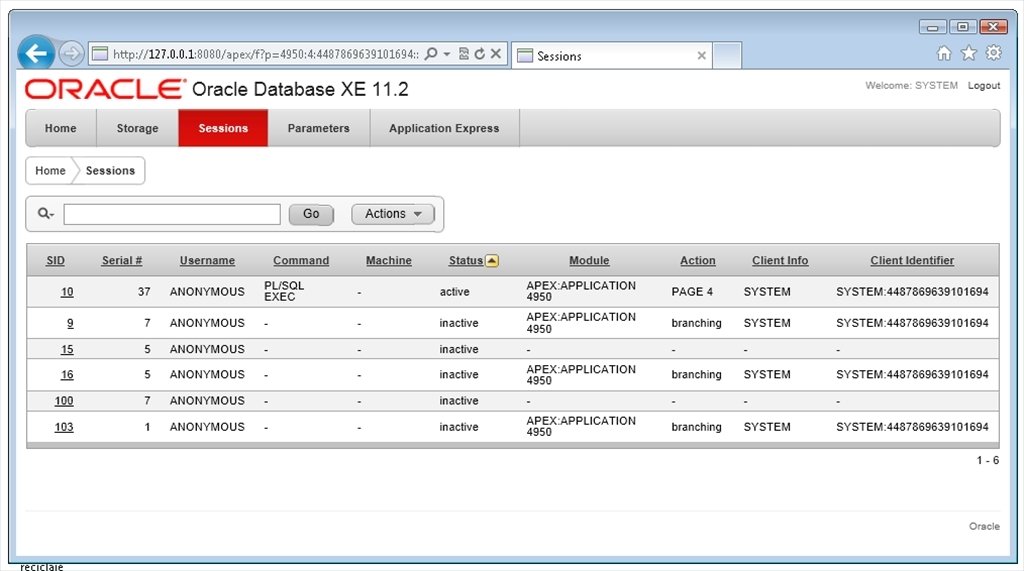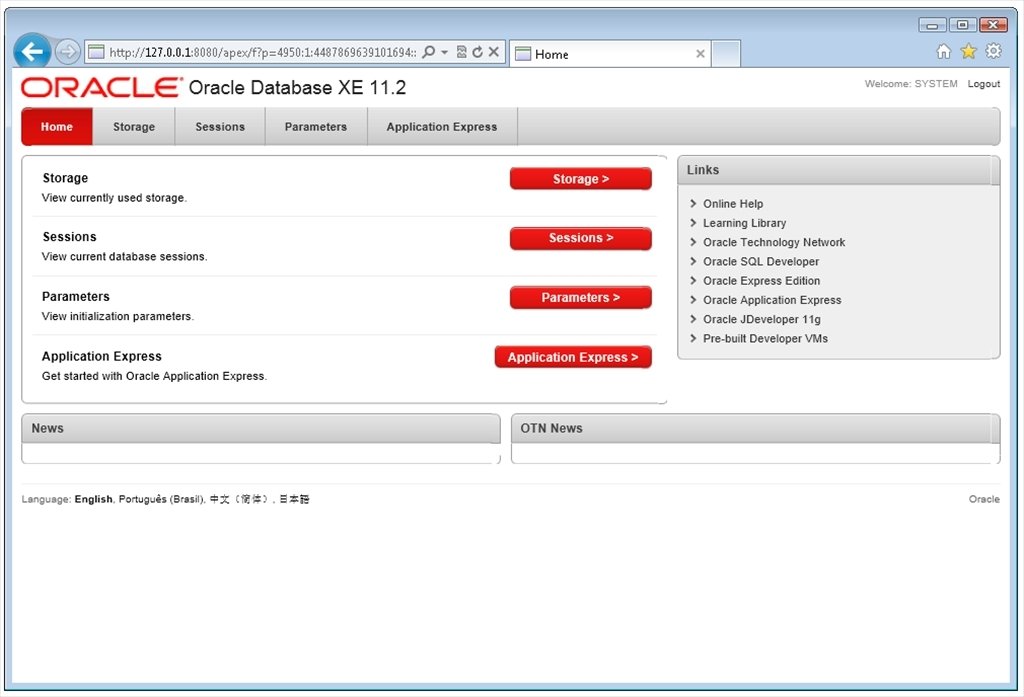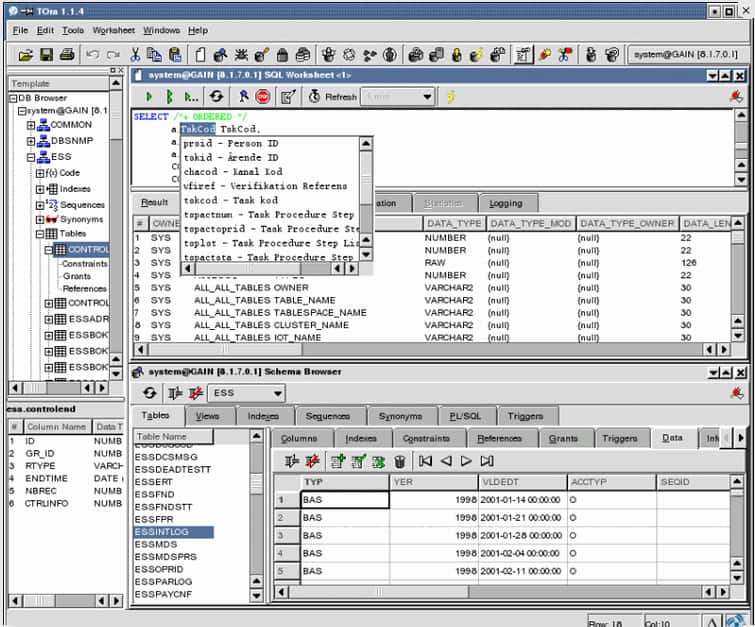Oracle software, a global leader in enterprise technology, has played a pivotal role in shaping the digital landscape. From its humble beginnings to its current dominance in database management, cloud computing, and enterprise applications, Oracle has consistently delivered innovative solutions that empower businesses worldwide.
Table of Contents
This comprehensive guide delves into the multifaceted world of Oracle software, exploring its history, key products, architecture, implementation, administration, development, integration, security, licensing, and future trends. We aim to provide a clear understanding of how Oracle software functions, its benefits, and its impact on various industries.
Oracle Software Administration
Oracle software administration is a crucial role in any organization that utilizes Oracle databases and applications. Oracle software administrators are responsible for the smooth operation, security, and performance of these systems, ensuring they meet the needs of the organization.
Responsibilities of an Oracle Software Administrator
Oracle software administrators have a wide range of responsibilities, including:
- Installation and configuration: Installing, configuring, and maintaining Oracle databases and applications, including patching and upgrading systems to ensure optimal performance and security.
- Performance tuning: Monitoring system performance, identifying bottlenecks, and implementing optimization strategies to improve database and application response times.
- Security management: Implementing and enforcing security policies, managing user accounts and permissions, and protecting sensitive data from unauthorized access.
- Backup and recovery: Implementing and maintaining backup and recovery procedures to ensure data integrity and recoverability in case of failures or disasters.
- Troubleshooting and problem resolution: Diagnosing and resolving issues related to database and application performance, security, and availability.
- Capacity planning: Planning for future growth and capacity requirements, ensuring the database and applications can handle increasing workloads.
- Documentation and reporting: Maintaining documentation of system configurations, procedures, and incidents, and generating reports on system performance and security.
Tools and Techniques for Managing and Monitoring Oracle Databases and Applications
Oracle software administrators utilize various tools and techniques to manage and monitor Oracle databases and applications effectively. These include:
- Oracle Enterprise Manager (OEM): A comprehensive management console for monitoring, managing, and troubleshooting Oracle databases and applications. OEM provides real-time performance insights, alerts on potential issues, and automated tasks for administration.
- SQL*Plus: A command-line interface for interacting with Oracle databases, allowing administrators to execute SQL statements, manage users and permissions, and perform various administrative tasks.
- PL/SQL Developer: A powerful development tool for creating, debugging, and managing PL/SQL code, which is used to extend Oracle database functionality and automate tasks.
- Toad for Oracle: A popular database development and administration tool that provides a rich set of features for database development, SQL tuning, and performance monitoring.
- Oracle SQL Developer: A free, integrated development environment (IDE) for Oracle database development and administration, offering features for SQL editing, debugging, and database management.
Importance of Security and Performance Optimization in Oracle Software Administration
Security and performance optimization are critical aspects of Oracle software administration.
- Security: Protecting Oracle databases and applications from unauthorized access, data breaches, and cyberattacks is paramount. This involves implementing robust security policies, managing user permissions, and utilizing security features like encryption and data masking.
- Performance optimization: Optimizing database and application performance ensures efficient resource utilization, fast response times, and high availability. This requires identifying performance bottlenecks, tuning database parameters, and optimizing SQL queries.
Best Practices for Troubleshooting and Resolving Issues Related to Oracle Software
Troubleshooting and resolving issues related to Oracle software requires a systematic approach and a strong understanding of the underlying technologies.
- Gather information: Collect relevant information about the issue, including error messages, system logs, and performance metrics.
- Identify the root cause: Analyze the gathered information to pinpoint the root cause of the issue, using tools like OEM, SQL*Plus, and performance monitoring utilities.
- Develop a solution: Based on the identified root cause, develop a solution to resolve the issue. This may involve patching the system, configuring database parameters, or optimizing SQL queries.
- Test and implement the solution: Thoroughly test the solution in a controlled environment to ensure it resolves the issue without introducing new problems. Once validated, implement the solution in the production environment.
- Document the resolution: Document the issue, the solution implemented, and any lessons learned to aid in future troubleshooting efforts.
Oracle Software Integration
Oracle software is renowned for its powerful features and robust capabilities. However, its true potential is unlocked when it’s seamlessly integrated with other systems and applications. This integration allows organizations to streamline processes, improve data flow, and enhance overall efficiency.
Methods for Integrating Oracle Software
Oracle provides various methods for integrating its software with other systems, ensuring compatibility and data exchange. These methods offer flexibility to cater to different integration needs.
- Oracle Application Express (APEX): APEX enables developers to build web-based applications that interact with Oracle databases. This method is ideal for integrating Oracle with front-end systems, providing a user-friendly interface for data access and manipulation.
- Oracle Fusion Middleware: This comprehensive suite offers a range of integration tools, including Oracle SOA Suite, Oracle Service Bus, and Oracle Data Integrator. Fusion Middleware facilitates complex integration scenarios, connecting diverse systems and applications through a centralized platform.
- Oracle Enterprise Manager (OEM): OEM is a powerful tool for managing and monitoring Oracle databases and applications. It provides integration capabilities, enabling seamless communication with external systems for automated tasks and alerts.
- Oracle GoldenGate: This data replication technology facilitates real-time data synchronization between Oracle databases and other systems. GoldenGate ensures data consistency across different environments, enabling efficient data integration.
- Oracle Data Pump: This tool allows for efficient data migration and transfer between Oracle databases and other systems. Data Pump simplifies the process of moving large datasets, facilitating integration with external data sources.
Role of APIs and Middleware
APIs (Application Programming Interfaces) and middleware play a crucial role in facilitating seamless integration. APIs act as intermediaries, enabling communication between different systems and applications. Middleware provides a platform for managing and orchestrating the integration process, ensuring data flow and synchronization.
Examples of Successful Oracle Software Integrations
Oracle software integration has been successfully implemented in various industries, showcasing its versatility and effectiveness.
- Financial Services: Banks and financial institutions use Oracle software integration to connect their core banking systems with customer relationship management (CRM) platforms, enabling personalized financial services and streamlined customer interactions.
- Healthcare: Hospitals and healthcare providers leverage Oracle software integration to manage patient records, schedule appointments, and track medical billing. Integration with electronic health record (EHR) systems ensures accurate and secure data exchange.
- Manufacturing: Manufacturing companies use Oracle software integration to connect their enterprise resource planning (ERP) systems with supply chain management (SCM) platforms, optimizing production processes and inventory management.
- Retail: Retail businesses integrate Oracle software with point-of-sale (POS) systems, enabling real-time inventory tracking, sales analysis, and customer loyalty programs.
Integration Scenarios and Technologies
| Integration Scenario | Technologies Used |
|---|---|
| Integrating Oracle E-Business Suite with a third-party CRM system | Oracle Fusion Middleware, Oracle SOA Suite, Web services |
| Synchronizing data between Oracle databases and a data warehouse | Oracle GoldenGate, Oracle Data Pump |
| Building a web application to access Oracle database data | Oracle Application Express (APEX), PL/SQL |
| Monitoring and managing Oracle databases from a central console | Oracle Enterprise Manager (OEM), SNMP |
Oracle Software Licensing

Oracle software licensing is a complex and crucial aspect of using Oracle products. Understanding the different license types, pricing models, and legal implications is essential for organizations to ensure they are using Oracle software legally and cost-effectively.
Types of Oracle Software Licenses
Oracle offers a variety of software licenses, each with its own pricing model and usage rights. Some of the most common license types include:
- Named User Plus (NUP): This license grants access to the software for a specific named user, allowing them to use the software on multiple devices. NUP licenses are typically priced per user.
- Processor: This license grants access to the software based on the number of processors on the server. Processor licenses are typically priced per processor.
- Named User (NU): This license grants access to the software for a specific named user, allowing them to use the software on a single device. NU licenses are typically priced per user.
- Concurrent User (CU): This license grants access to the software based on the number of users who can simultaneously use the software. CU licenses are typically priced per user.
- Server: This license grants access to the software for a specific server, allowing any user to access the software on that server. Server licenses are typically priced per server.
- Oracle Cloud: Oracle offers a variety of cloud-based software licenses, which provide access to Oracle software through a subscription model. These licenses are typically priced based on usage or consumption.
Oracle Software Licensing Pricing Models
Oracle uses a variety of pricing models for its software licenses. These models can be complex and vary depending on the specific software product and license type. Some of the most common pricing models include:
- Per User: This model charges a fee for each user who will access the software.
- Per Processor: This model charges a fee for each processor on the server that will run the software.
- Per Server: This model charges a fee for each server that will run the software.
- Subscription: This model charges a recurring fee for access to the software over a specific period.
Legal Implications of Oracle Software Licensing and Compliance
Oracle software licensing is subject to strict legal regulations. Organizations must ensure they are using Oracle software in compliance with the terms of their license agreements. Failure to comply with these agreements can result in significant penalties, including fines and legal action.
- License Agreements: Organizations must carefully review and understand the terms of their Oracle license agreements. These agreements Artikel the specific rights and obligations of the organization regarding the use of the software.
- Audits: Oracle conducts regular audits to ensure that organizations are using its software in compliance with their license agreements. Organizations must be prepared to provide documentation and evidence of their software usage during these audits.
- Penalties: Organizations that are found to be in violation of their Oracle license agreements can face significant penalties. These penalties can include fines, legal fees, and even the loss of access to the software.
Best Practices for Managing Oracle Software Licenses and Ensuring Compliance
Organizations can implement a number of best practices to manage their Oracle software licenses and ensure compliance. These best practices include:
- Centralized License Management: Organizations should establish a centralized system for managing their Oracle software licenses. This system should track all licenses, including the license type, purchase date, expiration date, and usage details.
- Regular License Reviews: Organizations should conduct regular reviews of their Oracle software licenses to ensure that they are using the appropriate licenses for their needs. These reviews should identify any unused licenses or licenses that are no longer required.
- Documentation: Organizations should maintain accurate and up-to-date documentation of their Oracle software licenses. This documentation should include details about the license type, purchase date, expiration date, and usage details.
- Training: Organizations should provide training to their employees on Oracle software licensing and compliance. This training should cover the terms of the license agreements, best practices for using the software, and the potential consequences of non-compliance.
Comparison of Oracle Software License Options
| License Type | Features | Pricing Model |
|—|—|—|
| Named User Plus (NUP) | Access to the software for a specific named user, allowing them to use the software on multiple devices. | Per user |
| Processor | Access to the software based on the number of processors on the server. | Per processor |
| Named User (NU) | Access to the software for a specific named user, allowing them to use the software on a single device. | Per user |
| Concurrent User (CU) | Access to the software based on the number of users who can simultaneously use the software. | Per user |
| Server | Access to the software for a specific server, allowing any user to access the software on that server. | Per server |
| Oracle Cloud | Access to Oracle software through a subscription model. | Based on usage or consumption |
Oracle Software Trends and Future

Oracle software has been a dominant force in the technology landscape for decades, consistently adapting to evolving business needs. Today, the company faces a dynamic environment characterized by cloud computing, artificial intelligence (AI), and big data, shaping the future of its software offerings.
Oracle Software Trends
The adoption of cloud computing has significantly impacted Oracle’s software strategy. The company has made substantial investments in its cloud platform, Oracle Cloud, to provide a comprehensive suite of services, including infrastructure as a service (IaaS), platform as a service (PaaS), and software as a service (SaaS). Oracle Cloud offers a range of solutions for various industries, including finance, healthcare, and manufacturing. This shift towards cloud-based solutions allows businesses to access Oracle’s software with increased flexibility, scalability, and cost-efficiency.
Oracle Software’s Role in Digital Transformation
Oracle software plays a critical role in enabling digital transformation initiatives across diverse industries. The company’s offerings provide businesses with the tools and technologies necessary to streamline operations, enhance customer experiences, and gain a competitive edge in the digital age. Oracle’s database management systems, enterprise resource planning (ERP) solutions, and customer relationship management (CRM) applications are instrumental in supporting businesses’ digital transformation journeys.
Impact of Oracle Software on Different Industries
Oracle software has a profound impact on various industries, enabling them to optimize their operations, enhance efficiency, and drive innovation. For instance, in the financial services industry, Oracle’s banking solutions empower institutions to manage risk, comply with regulations, and deliver personalized customer experiences. In healthcare, Oracle’s software helps hospitals and clinics manage patient data, streamline administrative processes, and improve patient outcomes. The company’s solutions cater to specific industry needs, driving growth and innovation across diverse sectors.
Timeline of Key Milestones and Future Predictions
- 1970s: Oracle’s founding and the development of its first database management system.
- 1980s: Expansion into enterprise resource planning (ERP) solutions and the introduction of Oracle Financials.
- 1990s: Oracle’s acquisition of PeopleSoft and Siebel Systems, strengthening its position in the CRM market.
- 2000s: Oracle’s focus on cloud computing and the launch of Oracle Cloud.
- 2010s: Continued investment in cloud technologies, AI, and big data, further expanding Oracle’s offerings.
- 2020s: Oracle is expected to continue its focus on cloud-native applications, AI-powered solutions, and the development of innovative technologies for industries such as finance, healthcare, and manufacturing.
Ultimate Conclusion

Oracle software continues to evolve, adapting to the ever-changing technological landscape. As businesses increasingly embrace cloud computing, artificial intelligence, and big data, Oracle’s solutions are poised to play an even more significant role in shaping the future of digital transformation. By understanding the intricacies of Oracle software, businesses can leverage its capabilities to achieve greater efficiency, scalability, and innovation.
Oracle software offers a robust platform for managing data and applications, but its reach extends beyond traditional databases. For industries like manufacturing, Oracle integrates seamlessly with tools like cad design software, enabling streamlined workflows and efficient data exchange between design and production processes.
This integration enhances collaboration and improves overall efficiency within the manufacturing lifecycle, showcasing Oracle’s versatility beyond its core database capabilities.
